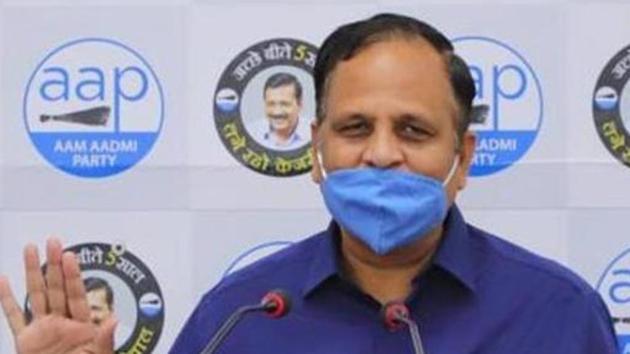Farm fires to blame for higher Covid-19 deaths, says Delhi health minister Satyendar Jain
Delhi, as per Monday’s health bulletin, reported 4,458 new cases of the disease — a drop that came on the back of fewer tests conducted on Sunday.
State health minister Satyendar Jain on Monday attributed the rising Covid-19 fatalities in the city to pollution from stubble burning in neighbouring states, as the city reported 121 deaths of the infection, taking Delhi’s toll past 8,500. The Capital has seen more than 100 deaths of the disease for four straight days now.

Delhi, as per Monday’s health bulletin, reported 4,458 new cases of the disease — a drop that came on the back of fewer tests conducted on Sunday. Just over 37,000 tests had been conducted, as per the bulletin, compared to an average of 56,000 tests during the rest of the week. However, over 48% of these were conducted using the RT-PCR method, which is considered the most accurate to diagnose Covid-19.
So far, 8,512 people in the city have died of the infection.
Monday’s toll, the same as the day before, is the second highest recorded in a single day. The most – 131 – were reported on November 18.
Also Read | Start of second Covid-19 wave? States impose fresh set of curbs, curfews are back
The number of deaths has shot up over the fortnight, with 114 people dying on average each day during this week, as compared to 93 the week before and 65 the week before that. The seven-day average case fatality ratio (CFR) – number of deaths among those who test positive — is inching closer to 2%. It stood at 1.84% as per data shared in Monday’s health bulletin.
Jain, meanwhile, said that people who contracted Covid-19 when pollution levels were in the ‘severe’ zone earlier this month, faced more serious symptoms.
“The pollution in Delhi caused by stubble burning created a lot of problems. Pollution leads to aggravation of respiratory symptoms and the effect of it would be felt for two to three weeks. The people who got Covid-19 when the pollution levels were high, got more serious disease. Now, that pollution levels have gone down, the cases and deaths will go down in two to three weeks,” said Jain during a press briefing on Monday.
“Death usually follows the curve of the number of cases and should start coming down in two weeks,” said Jain.
Last week, the minister had said that most of the Covid-19 deaths in the city happened ten days after admissions, an improvement from nearly 50% of the deaths happening within 72 hours during the surge in cases in June-July.
Studies from across the world have shown that there could be an increase in the number of deaths due to Covid-19 with the increase in the levels of pollution.
A study from Italy shows that higher mortality was reported from regions where the air pollution levels were high. The mortality in Northern Italy – where pollution levels are higher – had 12% mortality rate as compared to 4.5% in other parts of the country. Another research from Europe, showed that 78% of all the Covid-19 deaths were reported from five regions in Italy, France, Spain, and Germany where the levels of nitrogen dioxide was high.
A study from Harvard University showed that with every 1 μg increase in long-term exposure to PM 2.5, the Covid-19 mortality went up by 8%.
Jain, however, assured that there was a downward trend in the number of cases and case positivity rate — number of samples that test positive among total tested — suggesting that the situation is likely to improve in the city.
Experts argue that the transmission of the disease is in control when the positivity rate remains at 5% or below for at least two weeks. Delhi’s seven-day average positivity rate stands at 12.1%, as per Delhi government data.
“Pollution cannot be the only factor leading to the increase in the number of Covid-19 deaths. The temperatures dipped simultaneously, the festivities led to more infections, and the higher number of cases meant people were reporting late to hospitals,” said Dr Vikas Maurya, head of the department of pulmonology at Fortis hospital, Shalimar Bagh.




